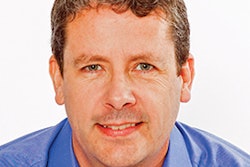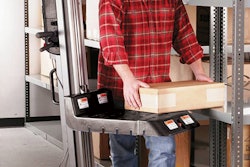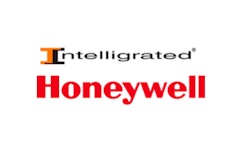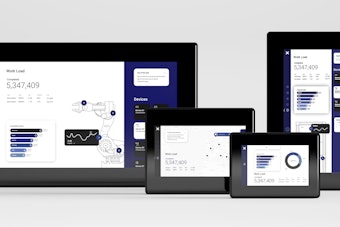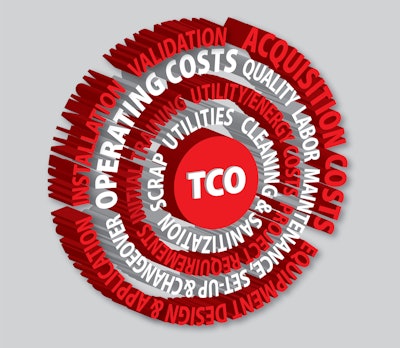
Without a governing body standardizing around what constitutes TCO, the often-misunderstood acronym has been relegated to the wild west of packaging and processing industry terminology. For years, no two machine builders shared a common TCO arithmetic, which drove many CPGs to fits. But the OEMs supplying them aren’t perfectly comfortable with wholesale acquiescence to absolute price transparency. In fact, they tend to fall into one of two camps. There are those that urge proceeding carefully, and those that take TCO into their own hands.
An agreed upon, industry-wide set of considerations for TCO could address the challenge of determining which factors to include, and to what level of granularity. The desired effect would be that CPG buyers could better compare apples to apples, while OEMs can still differentiate themselves among their competitors.
Exercising caution
One OEM that PP-OEM spoke to, but didn’t want to be named, stated a fear that increased focus on price—especially with increased granularity—invites commoditization, and shifts focus away from the value of the machines. And the actual value of the machines is the very thing that a concept like TCO aims to clarify.
When asked about the viability of this worry, Matt Job, business unit manager, Hartness International, Greenville, SC, didn’t go so far as to agree, but did acknowledge that commoditization is a genuinely held worry.
“Within PMMI, there are multiple companies competing to bring the greatest value to our end users, the key item to sustain growth within our marketplace is true differentiation,” Job says.
He pointed to OMAC’s PackML standard as an example, saying that if all HMI functions were standardized, then OEMs’ ability to bring the added value of creative freedom to the table is thus reduced. Though, the standard doesn’t currently limit these freedoms. As it stands, PackML’s adoption among OEMs is now often seen as a playing-field leveler as much as adding value for the end user.
“We want to be a differentiated buy based on the solutions, the value, and the people we bring to the table that provide that value,” Job adds. “Is standardizing bad? No. But if it turns us all into a commodity, then that’s cause for concern.”
Steve Schlegel, managing director of PMMI’s OpX Leadership Network, has heard that worry from OEMs. Having considered it in the context of end users’ needs and desires, he argues against the notion of commoditization as a potential outcome. Schlegel explains that larger CPGs are not pushing for a single, standard TCO calculator to put OEMs on a level playing field, rather to understand what goes into the machines they are buying, and to measure machine performance over time.
Taking the law into your own hands
Meanwhile, there are those OEMs that are less concerned about becoming a commodity and more concerned with demonstrating their value through their own TCO calculations and guidelines. The difficulty there is which guidelines to choose.
Many CPGs feel that their machine suppliers are always happy to focus on certain value propositions in comparison to their peers, but only on their favorite value propositions, not all of them. In this sense, they have felt that each of the many competing existing TCO models was created by an OEM cherry-picking metrics to cast the machine in a favorable light.
But that’s sales—and asking against it is impractical. And that’s why Bob Goldberg, marketing director, PAC Machinery, San Rafael, Calif., is happy to work on his own set of metrics and considerations to create the TCO calculation his customers are asking for. This DIY approach to TCO is good in a pinch, but it works against that apples-to-apples snapshot that CPGs seek.
In the big picture, Goldberg says he is less worried about commoditization and more concerned with showing the value of his company’s equipment against competitors, and in lieu of an existing standard, he will try his best to provide his own.
“You are serving your customers best when you sit down and help them ascertain what the best solution is, rather than hoping they are going to perform their due diligence. We can help them arrive at their best choice,” Goldberg says. “We help them do that through our own version of TCO, but we would have no problem having a more universal method for determining TCO.”
So far, Goldberg has relied on his own approach for calculating TCO, which has served many end user customers well.
“There are many subtle factors that play into TCO, but if customers had an organized way to look at it, they would be able to understand the value of our product,” Goldberg says.
Another way OEMs approach calculating the total cost is by grouping machine and maintenance costs into a bundle that is then added onto the up front cost of the equipment. Job gives his customers a straightforward look at the cost of the machine, wear parts, and routine maintenance for up to five years after the initial equipment purchase with what he terms the “Hartness Package.”
“Using historical data, we are able to estimate typical wear parts, audits, and preventative maintenance and provide that in a lump sum of one-to-five-year increments,” Job says. “These are the costs we can control via sound engineering and manufacturing processes. It becomes more difficult to estimate non-fixed costs based on variation in material and customer’s internal costs.”
OEMs can address non-fixed costs in TCO by thinking of the total cost as a living thing. Alan Bonanno, marketing manager, Serac, Carol Stream, Ill., says TCO is an ongoing dialogue between his company and its customers to fill in gaps that are created by not having an industry-wide calculator or standard for TCO.
With every OEM developing its own way to calculate TCO, inconsistent computations push the industry father away from arriving at a standard.
An effort to build a framework for conversation
A discussion regarding the lack of any kind of industry guidelines or protocol during a PMMI industry meeting led PMMI’s OpX Leadership Network to create a Total Cost of Ownership Solutions Group and a TCO playbook, which includes a TCO checklist made up of factors for OEMs to baseline total cost calculations off of.
“Very quickly we recognized that there were many alternate methodologies to calculating TCO. Each member of the industry just did it their own way, and felt that what they thought was best—if they did it at all,” Schlegel says.
Hartness, along with many other OEMs, has studied the checklist and spoke with customers on how they could best use parts of the list, as not every portion of the list is applicable.
“We focus on what can we provide to our customers that we can control,” Job says. “We can’t control our customer’s electrical, operational, or project management costs (included in PMMI’s TCO checklist), which is why we have created a package that excludes all of that. Customers would love to see all that information in a TCO checklist, but it is so detailed, and is it even accurate?”
From the end user side, Madinah Allen, senior director of corporate engineering and technology, Snyder’s-Lance, Charlotte, N.C., appreciates the effort to demonstrate TCO, but while most CPGs look at tangible hard costs, the unknown elements make total cost calculations inconsistent.
Still, as an early adopter of OpX’s TCO checklist, Allen says the concept of TCO helps her address pain points her company experiences in dealing with OEMs by creating an open dialogue. She uses the checklist to enter into the buying process with a greater knowledge base to pull from when evaluating Snyder’s-Lance’s investment in new equipment purchases.
Mark Ruberg, VP, Pro Mach Business Process, also uses the OpX checklist, but still thinks there isn’t one, single solution to narrow in on calculating the total cost.
“First of all, there is no easy button. I haven’t been able to find that and I don’t think I will ever will. But I like that a unified TCO concept at least forces that thought process and discussion for people,” Ruberg says “I think that’s the reason. It is not a single equation because it is difficult.”
That’s not to say Ruberg doesn’t see the value of creating a common vocabulary for TCO. He says an agreed upon, de facto standard would be beneficial to the sales process and relationship between OEMs and CPGs. He has instructed the 220-plus members of his sales teams for Pro Mach’s brand and operating divisions to read the TCO playbook.
“The TCO playbook and checklist gives them some depth of awareness and actual input from the CPGs running these pieces of machinery,” Ruberg says.
While some OEMs still have not even seen the OpX checklist, much less use it as a baseline for their calculations, awareness and adoption are growing as evidenced by the growing number of downloads. But it’s not one-size-fits-all. Goldberg says he would rather opt for a one-page formula to calculate costs rather than the 10-page TCO checklist packet.
“If we had something more simplified, I’m not saying it will give people the end-all-be-all, but it will give them a good idea of where they are going with a piece of equipment,” Goldberg says. “If you want to make a science out of it, you can, but TCO is a combination of some numbers and a lot of common sense.”
Schlegel agrees with Goldberg in recognizing the checklist may not work for every OEM and end user. In most cases, though, a good argument can be made that the checklist can be used as a starting point and a strong collaborative tool to get conversation going in the right direction.
“The issues are very complex because these [pieces of equipment] are, most times, uniquely designed and engineered for specific situations. Do you need a total cost of ownership for every piece of equipment? The answer is no. That’s what companies need to understand, but even for simple or repeatable applications, it is good to follow the same mentality just so everything is considered,” Schlegel says.
Schlegel views the adoption of the TCO playbook and checklist as a journey that OEMs and CPGs take together, with OEMs learning the needs of their customers as the two partners optimize the machinery investments and spend their money wisely. At the same time, he’s cognizant of the fact that this is not something that will happen overnight for the industry.
So how should OEMs approach TCO with their customers while also being able to differentiate from competitors?
Looking forward
Using the OpX TCO document as a framework, and adding differentiating meat to the bones, might allow OEMs and CPGs to navigate their respective necessities of differentiation and comparison.
Job says his company is in the process of looking at ways to help capture better data to help change the way OEMs calculate TCO. Hartness has been working with industry leading suppliers to create a diagnostic system to collect real time data that provide insight on a components health similarly to a car in the sense that maintenance light only turns on when the car knows it needs to have service.
“Capturing machine data will help provide feedback so that machines are being maintained real time, and allow for scheduled downtime to be utilized, versus unplanned downtime due to a component failure.” Job says. “In doing this, you are able to maintain the equipment real time to help drive that total cost of ownership and really control it.”
Still, end user concerns about cybersecurity and remote monitoring persist. The OpX playbooks and checklist can foster the TCO dialogue that has to happen in lieu of total access to machine data. And again, Schlegel says agreeing on TCO will be an ongoing process.
If nothing else, the Goldilocks solution between vigorous standardization, whereby commoditization may occur, or a laissez-faire wild west of variables factored or not factored into TCO, could be this simple set of 16 guidelines that get OEMs and CPGs on the same page. How and where to turn those pages, and which to use, is then up to them.
